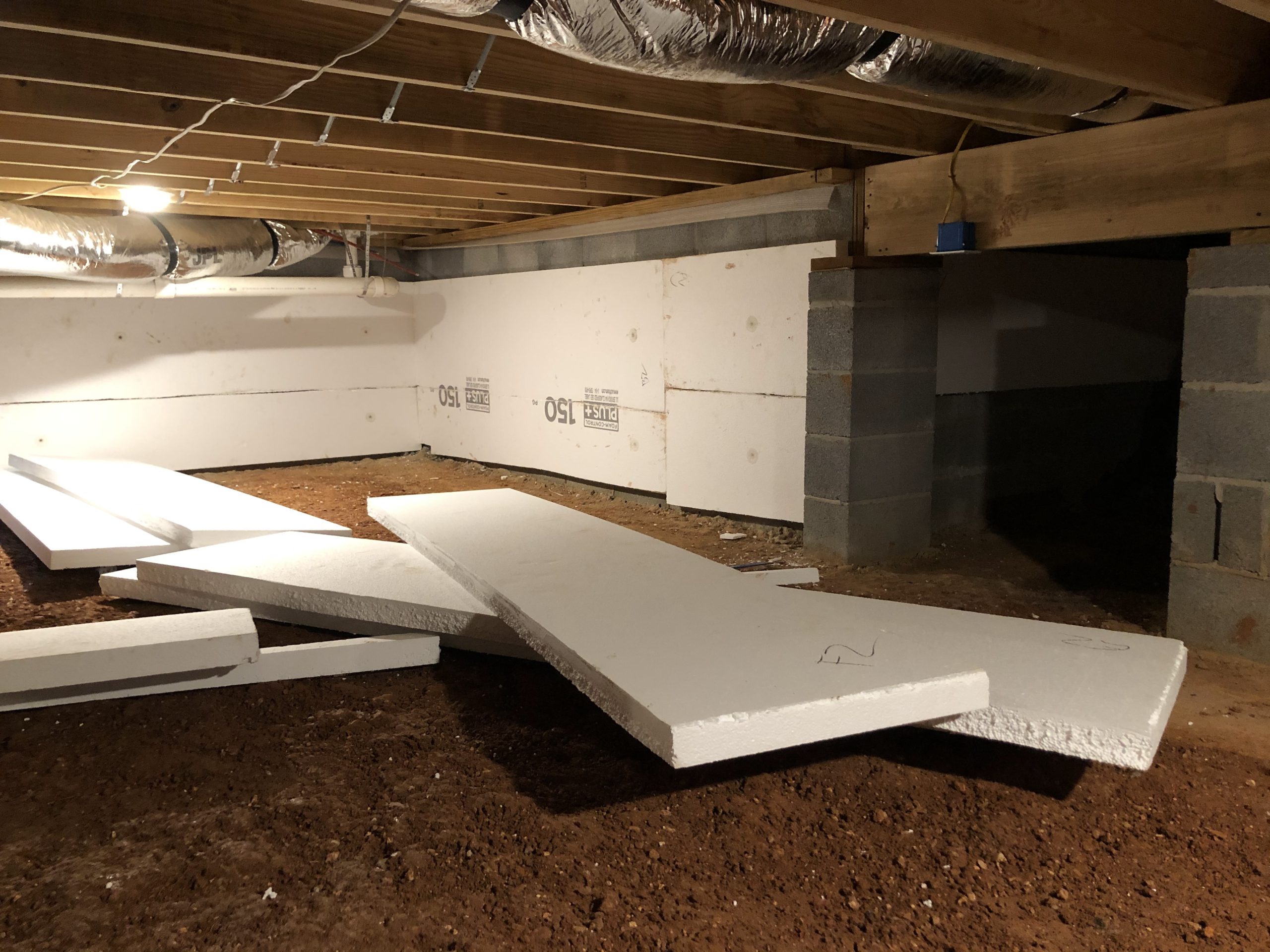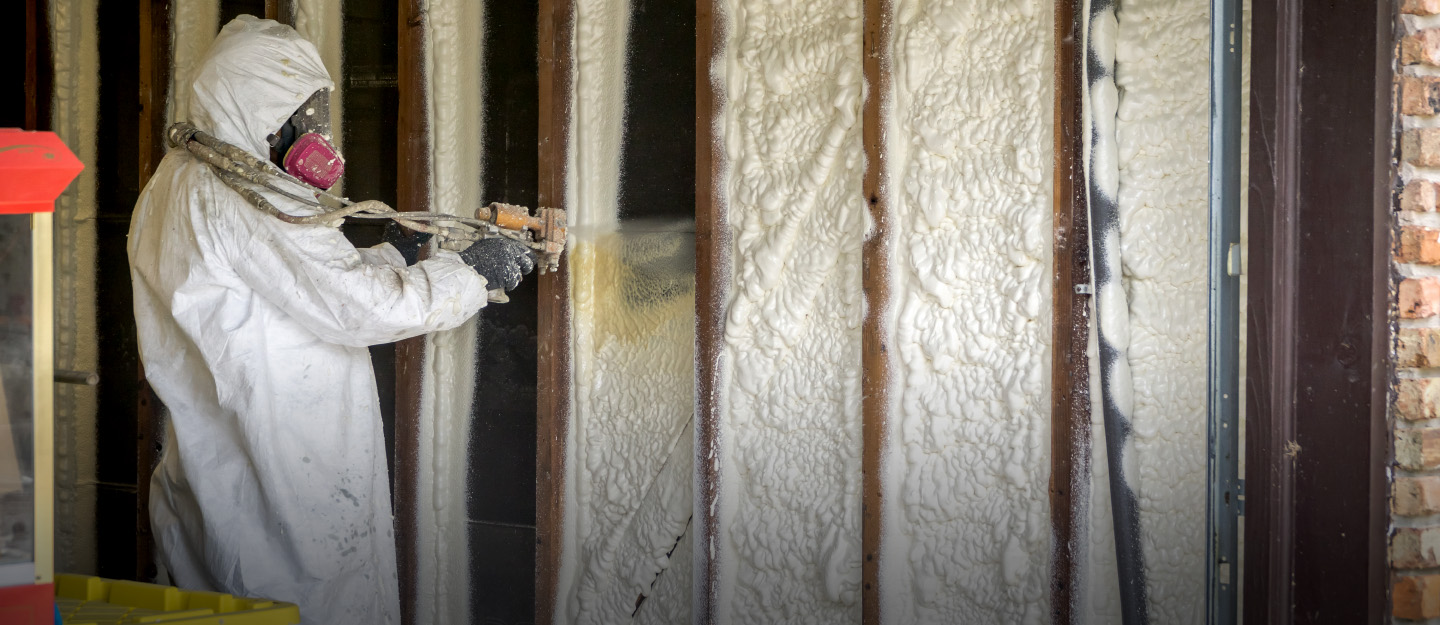Slipping and sliding on hardwood floors in your socks was pure joy as a kid. And let’s admit it, even as adults. We still find it amusing! However, nothing ruins the fun like freezing feet and a cold home. That’s when wearing socks feels more like a forced necessity than a fun activity.
The role of insulation is to regulate your home’s temperature, prevent air leaks, and trap temperature-controlled air inside. But not all insulation methods are created equal, and that’s where we come in!
So, if you want to keep the fun of slipping and sliding in your socks without feeling cold and shivering, let us help you choose the right insulation type for your home!
What Is Crawl Space Encapsulation?
Crawl space encapsulation is a process that involves sealing off the crawl space beneath your home from the outside environment. This process aims to prevent moisture from entering your home from the crawl space, which can lead to several problems, such as mold growth, structural damage, and even health issues.
Crawl spaces are typically found in homes with a foundation built off the ground. They are often used as storage areas or to house mechanical systems such as heating and cooling units, ductwork, and plumbing. However, crawl spaces can be a major source of problems if they are not properly sealed off from the outside environment.
What Is Spray Foam Insulation?
Now that we’ve covered what crawl space encapsulation is let’s talk about one of the most popular materials used for this process: spray foam insulation. Spray foam insulation, consisting of polyol resin and isocyanate, is applied using a spray gun to insulate. When these two components are mixed, they react and expand to create a foam that adheres to surfaces.
Spray foam insulation is a popular choice for crawl space encapsulation because it is highly effective at sealing off the space from the outside environment. It can help prevent moisture from entering your home, which can help avoid several problems.
Types Of Spray Foam Insulation
Insulating your crawl space can save you money on your energy bills and make your home more comfortable. But with so many options, how do you choose the right type of insulation and thickness? Well, first off, you have two choices when it comes to spray foam insulation:
Open-Cell Or Closed-Cell
Open-cell spray foam is excellent for filling gaps but has no moisture barrier, so it’s not recommended for colder climates. On the other hand, closed-cell provides extra durability and leak protection and has a higher R-value per inch, making it an excellent option for homes in areas that experience significant temperature changes.
Of course, the thickness of your insulation will also impact the crawl space repair cost. If you live in a mild climate, you only need a thin layer of insulation, while homes in more extreme climates will require thicker insulation. But don’t worry because investing in thicker insulation will lead to lower energy bills in the long run.
And What About Taking Out Old Insulation?
If your old insulation has been in place for years and has absorbed moisture, it’s time for professional removal. Old insulation can lead to wasted energy, higher utility bills, not to mention an uncomfortable living space. Professional removal ensures that any hazardous materials are safely disposed of.
Ultimately, crawl space insulation can be a cost-effective way to improve your home’s energy efficiency and comfort. So why not consider spray foam insulation? Just remember to choose the right type and thickness for your climate and to have old insulation removed by a professional.

How To Insulate Spray Foam Crawl Space
Upgrade your crawl space with spray foam insulation by removing the old insulation first. A skilled contractor will handle this, leaving a clean surface ready for spray foam application. Decide whether to spray the ceiling or walls using mechanicals or ductwork. Enjoy a transformed crawl space with the new insulation.
Insulating The Crawl Space Walls With Spray Foam
Upgrade your home’s insulation and say goodbye to drafty crawl spaces with spray foam insulation. A reputable contractor will lay plastic on the ground, spray the walls, and include the rim joist for complete coverage. This method creates an airtight vapor barrier that keeps your home comfortable and reduces energy costs.
Crawl Space Insulation For Ceiling
The process is similar to insulating the walls, minus the plastic. The old insulation will be removed, and a hose will run into the crawl space. Then, the installation crew will spray the foam on the underside of your floor, creating an air-sealed crawl space separate from the rest of your home. You’ll be happy to know that your crawl space will no longer allow cold air to move through, making your living space a cozy retreat.
Reasons You Should Use Spray Foam Insulation In Your Crawl Space
Here’s a step-by-step breakdown of why it’s such a great choice:
- Blocks Even The Most Minor Cracks: Spray foam insulation is incredibly effective at blocking even the tiniest cracks, which means no more drafts or cold floors under your home. This also means it will completely block airflow, immediately improving air quality by preventing pollen particles from entering your home. This is a significant win for anyone with allergies!
- Improves HVAC Performance: By completely blocking airflow, spray foam insulation also helps to improve the performance of your heating and cooling system. With improved HVAC performance, you’ll see increased energy savings and reduced heating and cooling costs.
- Repels Moisture: Spray foam insulation repels moisture, another major win for air quality. Keeping moisture out of your crawl space helps to prevent the growth of mold, which can be harmful to your health and cause damage to your flooring components.
- Deters Pests: Spray foam insulation sets up into a hard, dense material, which deters both insects and larger pests. This makes it an excellent choice for keeping unwanted visitors out of your crawl space. While determined raccoons may still be able to claw their way through, most pests will only want to work that hard when there are easier options nearby.
- Easy To Install: Spray foam board insulation adheres to the surface where it’s installed, so no fasteners are needed. It also conforms to the same space, which keeps it from deteriorating or falling. This makes it a low-maintenance option that you won’t have to worry about replacing anytime soon.
- High R-value: The R-value of spray foam insulation is double that of fiberglass batting, which is incredibly effective at preventing heat transfer. This leads to increased energy efficiency and overall comfort in your home.
- Improved Energy Efficiency: Spray foam insulation can help improve your home’s energy efficiency by sealing off air leaks and preventing drafts. Implementing this approach can lead to lower energy expenses and improved comfort in your living space.
- Increased Comfort: By sealing off your crawl space, you can help to prevent drafts and keep your home more comfortable year-round.
- Improved Indoor Air Quality: Mold and other allergens can thrive in a damp crawl space. You can help improve your home’s indoor air quality by sealing off the space with spray foam insulation.
- Increased Home Value: By encapsulating your crawl space with spray foam insulation, you can help increase your home’s value. This is because many homeowners see crawl space encapsulation as a valuable investment.
Comparison of Spray Foam to Fiberglass Insulation
Let’s break down the comparison of both insulations. First, spray foam crawl space encapsulation is more expensive, but don’t let that deter you. It’s worth the investment, especially regarding your crawl space.
When you spray foam insulation, a chemical reaction fills every nook and cranny. This creates an airtight seal that fiberglass insulation can’t match. Plus, unlike fiberglass, spray foam won’t absorb water or support mold growth. Say goodbye to damp, musty crawl spaces!
Another advantage of spray foam is its rigidity. Once it sets, it’s difficult for pests to tunnel through, making it an ideal choice for exposed underground spaces. And unlike fiberglass, it won’t become a cozy nest for rodents or insects.
While spray foam insulation may not be the most economical choice for your home, we highly recommend replacing any fiberglass insulation in your crawl space with spray foam. You’ll notice the difference in your energy bills and your comfort level.

Crawl Space Insulation Cost
How much will it cost to insulate your crawl space with spray foam insulation? While the best way to get an accurate estimate is to consult a professional spray foam insulation company, we can give you a rough idea of what to expect.
On average, closed-cell spray foam insulation costs approximately $1 to $1.50 per board foot. For the average crawl space size and conditions, you can expect to shell out anywhere between $1,800 to $3,600. However, remember that this is just a general estimate, and the actual cost may vary depending on various factors.
For example, the complexity of your crawl space layout, the size of the area to be insulated, and the condition of the existing insulation all play a role in the final cost. Additionally, if you’re dealing with water damage or mold issues, you’ll need to address those before spray foam crawl space encapsulation can be installed, adding to the overall cost.
Indicators That You Need To Insulate The New Crawl Space
Cold floors are one of the most common indicators for adding insulation to your crawl space. If the crawl space beneath your house isn’t properly insulated, that chilly air can move throughout your home, creating uncomfortable drafts that’ll have you reaching for the blankets.
But it’s not just about comfort. Cold floors can lead to sky-high energy bills and even frozen pipes. And if you’re living in Michigan, where many homes have ductwork that runs through the crawl space, you might be in for an even chillier surprise. That’s because if cold air flows around those ducts, the hot air inside them will cool down before it even has a chance to reach the vents in your bedroom or living room.
Conclusion
If you’re tired of feeling cold and shivering in your home, upgrading your crawl space insulation might be time. Here, we’ve covered everything you need to know about crawl space encapsulation, spray foam insulation, and the benefits of investing in this type of insulation. We’ve also provided tips on choosing the right style and thickness of insulation for your climate and insulating your crawl space walls and ceiling with spray foam. Ultimately, choosing spray foam insulation is a cost-effective way to improve your home’s energy efficiency and comfort while blocking even the tiniest cracks and improving your HVAC performance.


